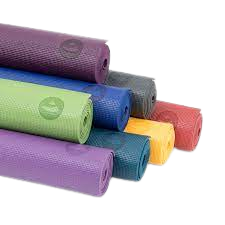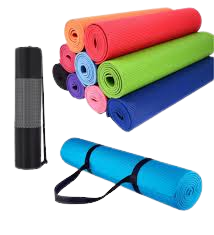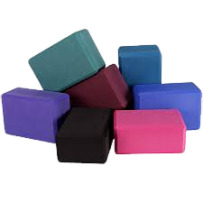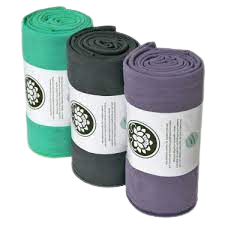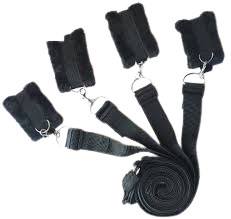The Evolution and Importance of Yoga Mats: A Comprehensive Guide
Introduction
Yoga mats, an ancient practice that originated in India, has gained tremendous popularity worldwide for its holistic approach to physical, mental, and spiritual well being. As more people embrace the benefits of yoga, the demand for suitable equipment, such as yoga mats, has also risen. In this comprehensive guide, we will explore the evolution, significance, and various aspects of yoga mats, shedding light on why they have become an essential companion for yoga practitioners globally.
The Ancient Roots of Yoga
Yoga, with its roots in ancient Indian philosophy, is a discipline that combines physical postures (asanas), breath control (pranayama), meditation, and ethical principles. Traditionally, yoga was practiced on natural surfaces like grass or animal skins. The focus was on connecting with the Earth and establishing a harmonious relationship between the practitioner and the environment.
As yoga spread beyond its cultural origins and gained popularity in the West, the need for a portable and supportive surface for practice became apparent. This necessity gave rise to the modern yoga mat.
The Birth of the Yoga Mat
The modern yoga mat, as we know it today, has a relatively short but fascinating history. In the mid 20th century, as yoga gained traction in Western countries, practitioners faced challenges when practicing on hard or slippery surfaces. This led to the creation of the first yoga mats, which were initially simple pieces of carpet or rugs.
As yoga’s popularity continued to soar in the 1960s and 1970s, innovative materials and designs were introduced to enhance the practice experience. During this period, the first commercialized yoga mats made their debut, crafted from materials like PVC (polyvinyl chloride) and rubber.
Materials Used in Yoga Mats
Over the years, the materials used in yoga mats have evolved to cater to the diverse needs and preferences of practitioners. Here are some common materials used in the production of yoga mats
PVC (Polyvinyl Chloride)
- PVC was one of the earliest materials used for yoga mats. It is durable, provides excellent grip, and is relatively inexpensive.
- However, concerns have been raised about the environmental impact of PVC production and its non biodegradable nature.
Rubber
- Natural rubber mats offer excellent grip and are known for their resilience and durability.
- Some practitioners prefer natural rubber mats for their eco friendly properties, as they are biodegradable.
TPE (Thermoplastic Elastomer)
- TPE is a newer, eco friendly material that is biodegradable and recyclable.
- TPE mats often have a good balance of cushioning and support.

Cork
- Cork yoga mats are appreciated for their natural feel and antimicrobial properties.
- Cork is a sustainable material as it is harvested from the bark of cork oak trees without harming the tree.
Jute
- Jute yoga mats are made from natural fibers, providing a textured surface for enhanced grip.
- Jute is a renewable resource, making it an eco friendly option.
EVA Foam
- EVA (ethylene vinyl acetate) foam mats are lightweight and offer excellent cushioning.
- These mats are suitable for practitioners who prioritize comfort during their practice.
Organic Cotton
- Cotton mats are soft and comfortable, making them suitable for gentle forms of yoga.
- Organic cotton mats are preferred for their environmentally friendly cultivation methods
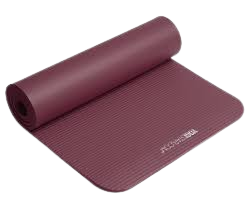
Considerations When Choosing a Yoga Mat
Selecting the right yoga mat is a personal decision that depends on various factors, including the type of yoga practiced, individual preferences, and environmental considerations. Here are some key considerations when choosing a yoga mat
Thickness
- Mat thickness impacts comfort and stability during practice.
- Thicker mats (6mm and above) provide more cushioning, which is beneficial for individuals with joint issues.
- Thinner mats (around 3mm) are preferred by those who prioritize a closer connection to the ground for balance poses.
Texture
- The texture of the mat’s surface influences grip and comfort.
- Smooth surfaces are suitable for dynamic practices, while textured surfaces provide better traction for static poses.
Stickiness/Grip
- A good grip prevents slipping during poses and transitions.
- Different materials offer varying degrees of stickiness, so practitioners may need to try different mats to find the one that suits them best.
Portability
- Consider the weight and portability of the mat, especially if you need to carry it to and from classes.
- Lightweight and easily foldable mats are ideal for on the go practitioners.
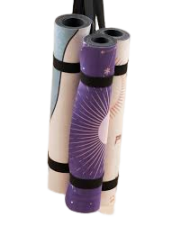
Environmental Impact
- Conscious consumers may prioritize mats made from eco friendly materials, such as TPE, natural rubber, cork, or organic cotton.
- Some brands are committed to sustainability, offering mats with minimal environmental impact.
Durability
- A durable mat withstands regular use and maintains its quality over time.
- Mats made from high quality materials tend to be more durable, offering a longer lifespan.
Yoga Mats and Sustainability
As the world becomes more environmentally conscious, the yoga community has shown a growing interest in sustainable and eco friendly options. Many manufacturers are responding to this demand by producing yoga mats with a reduced environmental footprint. Here are some trends and innovations related to sustainable yoga mats
Recycled Materials
- Some mats are made from recycled materials, such as recycled rubber or post consumer recycled PVC.
- This reduces the demand for new raw materials and minimizes waste.

Biodegradable Options
- Biodegradable mats are designed to break down naturally over time, reducing the environmental impact.
- Materials like TPE and natural rubber are biodegradable and offer a sustainable choice.
Closed Loop Manufacturing
- Some companies practice closed loop manufacturing, where the production process minimizes waste and maximizes the reuse of materials.
Plant Based Materials
- Mats made from plant based materials, such as cork or jute, are renewable and biodegradable.
- These mats often appeal to environmentally conscious practitioners.
Non Toxic and Hypoallergenic
- Environmentally friendly mats are often free from harmful chemicals like PVC, latex, and phthalates.
- Non toxic and hypoallergenic mats contribute to a healthier practice environment.
Maintaining Your Yoga Mat
Proper care and maintenance are essential to extend the life of your yoga mat and ensure a hygienic practice space. Here are some tips for maintaining your yoga mat
Cleaning
- Regularly clean your mat to remove sweat, oils, and bacteria.
- Use a mild detergent, natural cleaning solutions, or mat specific sprays.
- Avoid harsh chemicals that can degrade the mat’s material.
Drying
- Allow your mat to air dry after cleaning.
- Avoid direct sunlight and excessive heat, as these can damage certain mat materials.
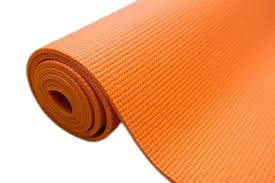
Rolling vs. Folding
- Roll your mat rather than folding it to prevent creases and damage.
- Some mats come with specific rolling guidelines to maintain their integrity.
Storage
- Store your mat in a cool, dry place when not in use.
- Avoid leaving it in a hot car or exposed to extreme temperatures for prolonged periods.
Personal Hygiene
- Practicing yoga barefoot can contribute to the longevity of your mat by reducing the transfer of oils and dirt.
- Consider using a yoga towel for added hygiene, especially in hot yoga classes.
Yoga Mats as a Tool for Mindfulness
Beyond their physical attributes, yoga mats play a role in creating a dedicated and mindful space for practice. Here’s how
Symbolic Space
- Unrolling your yoga mat signals the beginning of your practice, creating a symbolic space that separates your yoga time from the hustle and bustle of daily life.
Comfort and Safety
- A comfortable and familiar yoga mat provides a sense of safety, allowing practitioners to focus on their practice without distractions or concerns about slipping.

Mind Body Connection
- The texture and feel of the mat contribute to the mind body connection. Practitioners often develop a sense of groundedness and connection to the Earth through their mat.
Personal Sanctuary
- For many, the yoga mat becomes a personal sanctuary—a space to connect with oneself, cultivate mindfulness, and explore the inner journey of yoga.
Conclusion
The yoga mat has undergone a remarkable transformation from its humble beginnings as a simple rug to the diverse range of mats available today. As yoga continues to weave its way into the fabric of modern lifestyles, the yoga mat plays a crucial role in providing comfort, stability, and a personal space for practice.
Choosing the right yoga mat involves considering factors such as material, thickness, texture, and sustainability. The growing emphasis on eco friendly options reflects a collective awareness of the impact our choices have on the environment.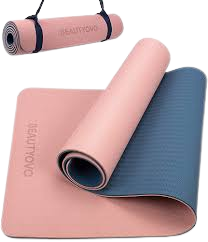
Whether you’re a seasoned yogi or a newcomer to the practice, investing in a quality yoga mat that aligns with your values and preferences can significantly enhance your overall yoga experience. As we move forward, the evolution of yoga mats will likely continue, driven by innovation, sustainability, and a deepening understanding of the connection between our practice and the world around us.
